This post may contain affiliate links. Please read our disclosure policy.
Spring is in the air, so it’s time to start preparing for backyard chickens! I will tell you everything you have ever wanted to know about Chicken Waterers and feeders and how to DIY your own from a 5-gallon bucket.
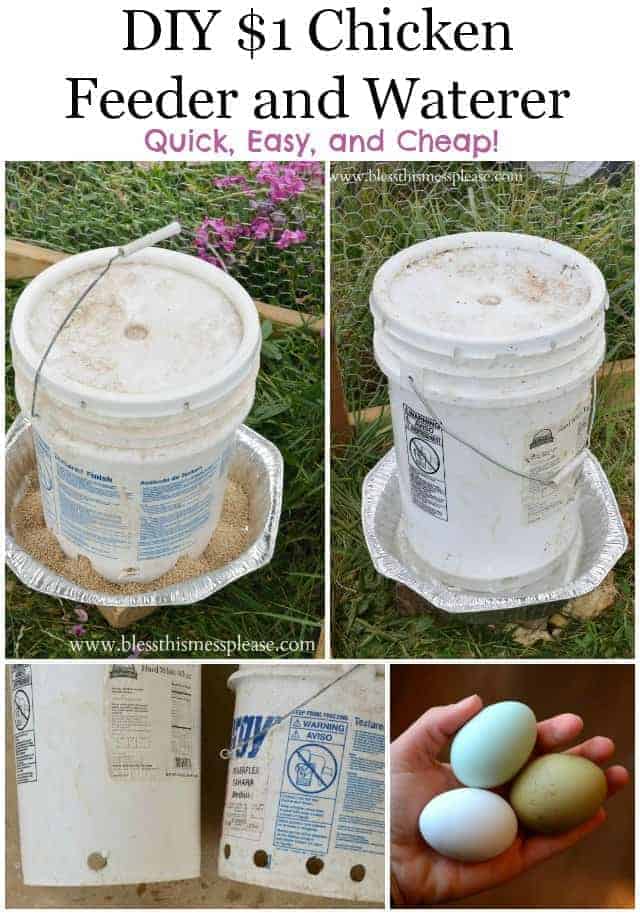
Providing animals with water to drink seems like a no-brainer, but there are many factors that go into watering chickens. For instance, how much water do chickens need, what type/material of waterer is best, how to keep the water clean, and how to DIY a simple and cost-efficient chicken waterer.
Appropriate access to clean water drastically influences how healthy a chicken is and how well it produces. If a chicken does not have ample water, they will stop laying eggs! Water also aids in the digestive process and helps a chicken eliminate waste.
When sufficiently hydrated, chickens can more effectively regulate their body temperature. A chicken that drinks clean, cool water also has a healthy brain. This will keep the animal in tip-top shape and its mind sharper to watch for predators.
And if they’re well-hydrated, they’ll keep laying those beautiful eggs for delicious meals like an egg and potato casserole, perfect for breakfast, lunch, or dinner.
Table of Contents
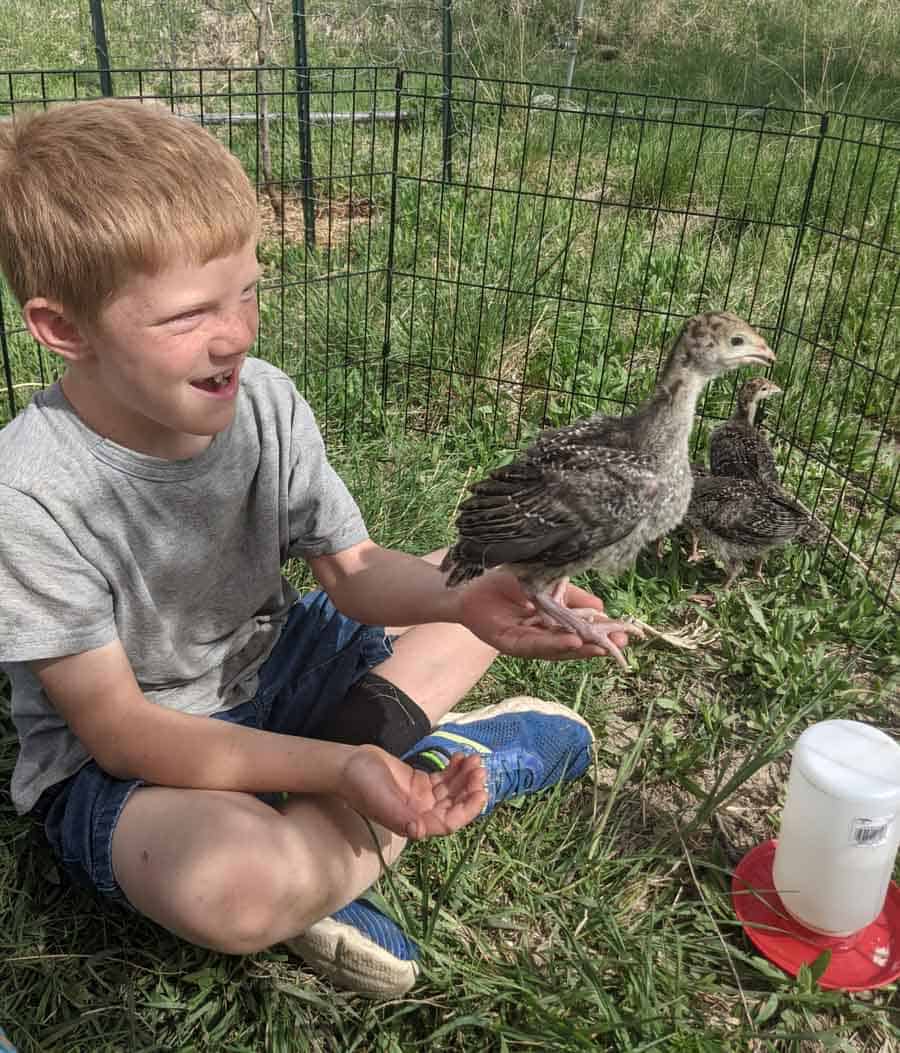
How Much Water Chickens Drink Per Day
It doesn’t seem like chickens drink much water because they just take small sips throughout the day. However, on average, a single chicken will drink about 1 pint of water daily. They will drink more if the temperature is hot.
Cool and Fresh Water, Please!
They also like cool, fresh water. If the water has been sitting out in the sun too long, hasn’t been refreshed regularly, or starts to get dirty from the chicken’s own doing, they may stop drinking. You don’t want a chicken that isn’t drinking, so remedy the issue quickly.
The process of chickens drinking water is fun to watch. Chickens use their tongue to push food to the back of their mouth to be swallowed, but that method doesn’t work for drinking.
If a chicken wants to drink water you will see them dip their beak into the water and rapidly tilt their head back to let the water drip down their throat. So you can imagine they can’t drink a whole bunch of water at once.
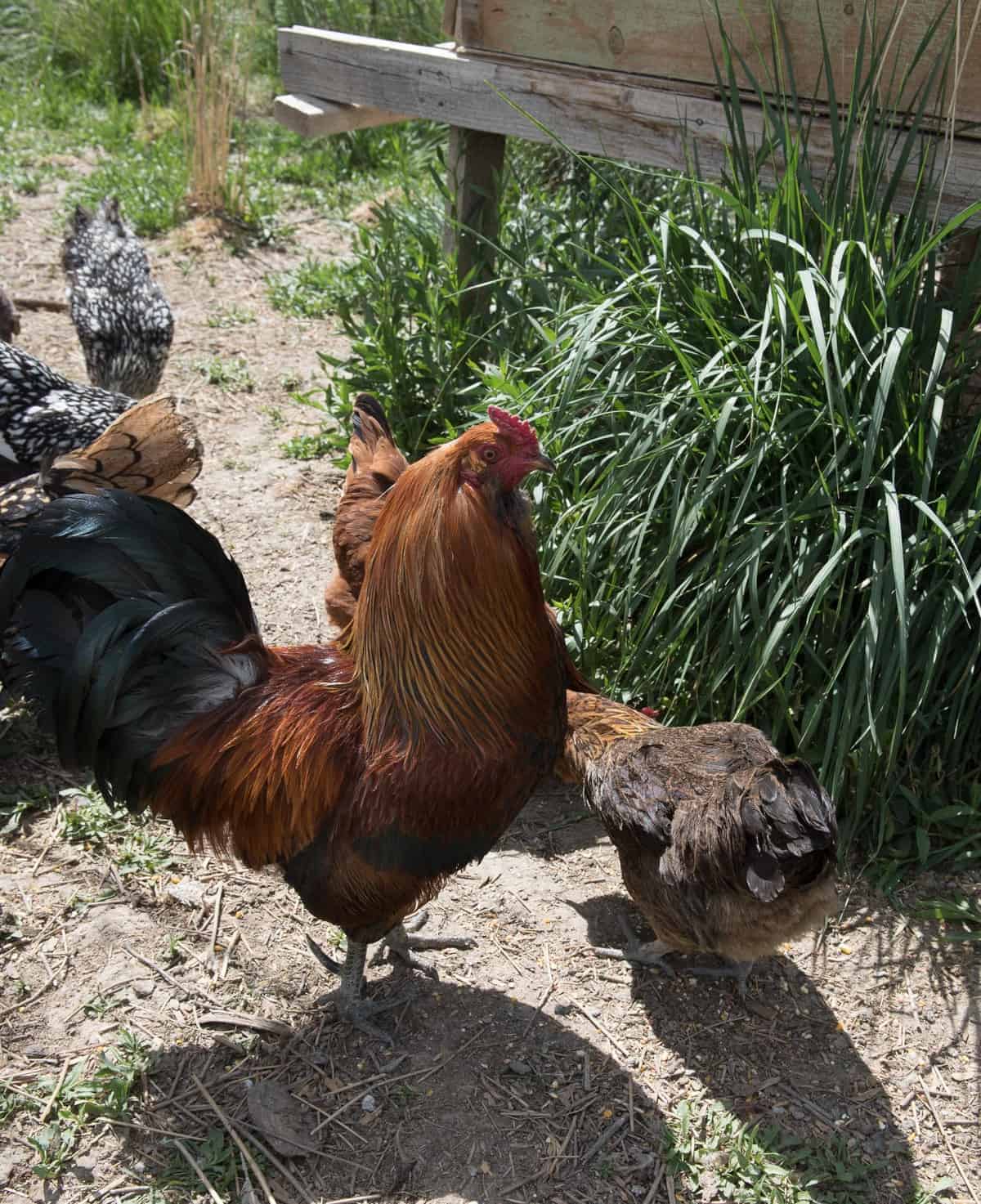
Tips for Keeping Chicken Water Fresh and Clean
Keeping the water you feed your chickens clean is essential.
- You should refresh their water daily to prevent bacteria buildup and algae forming.
- Sanitize the waterer at least weekly. Clean it with dish soap, a brush, or a diluted bleach solution.
- Place the water containers in shaded areas to prevent overheating and algae growth.
- Elevate the water containers off the ground to prevent dirt and droppings from getting into the water.
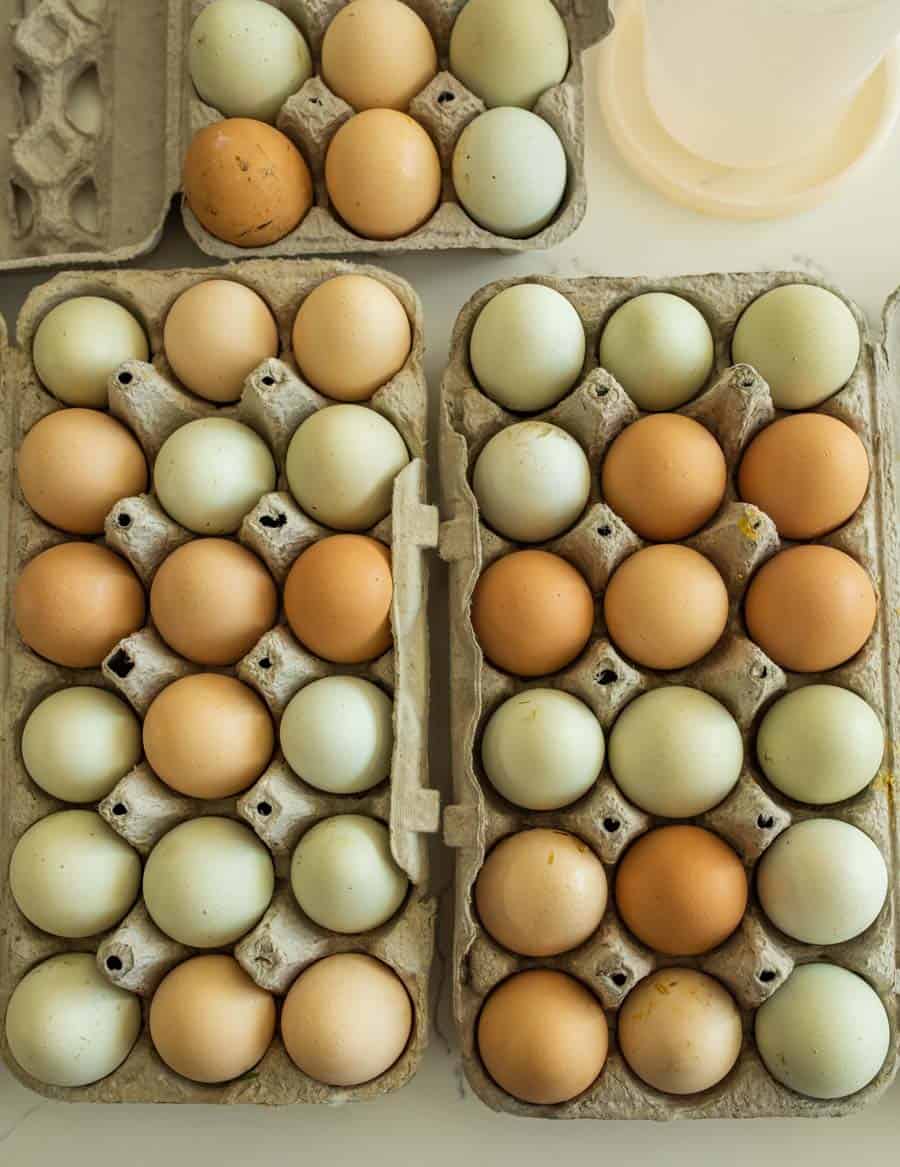
Project FAQs
Chickens typically do not need water at night. They sleep on their roosts until morning.
You want to place your waterers without direct sunlight to keep the water as cool as possible.
I plan for one large waterer per 6-8 chickens. Remember that each chicken will drink about 1 pint daily, so plan accordingly.
The general rule is that if it is safe enough for you to drink, your chickens can also drink it.
You will want to remedy the situation quickly if a chicken is dehydrated. When a chicken isn’t getting enough water, its egg-laying will slow down or stop completely. It will become lethargic, and you may notice it panting or having a pale comb.
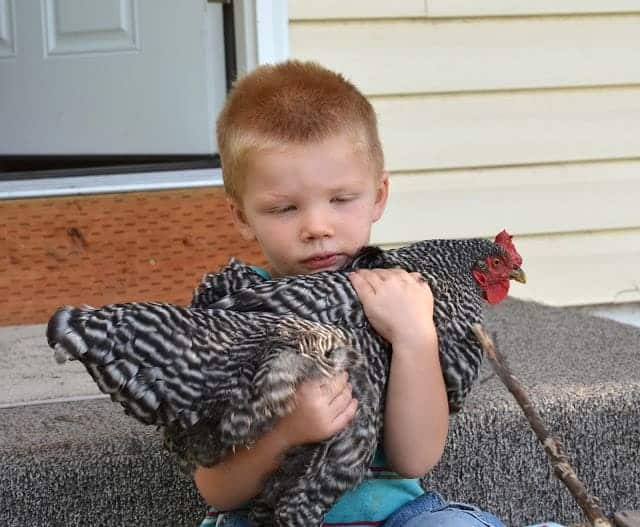
DIY Chicken Waterer and Feeder From 5-Gallon Buckets
Chicken waterers can come in various shapes, sizes, and dollar amounts and can be constructed from various materials. In my experience, you don’t need to break the bank to provide water for chickens. Your chickens will thrive if they have clean, fresh water and lots of it.
We have used this DIY version for chicken waterers for years and have found great success.
Materials Needed for Chicken Feeder and Waterer
- Two 5-gallon buckets with lids
- Drill
- 1-inch standard drill bit or paddle drill bit
- Two large foil roasting pans
Where to Get Materials
Buckets: Find a free source for the buckets. They are everywhere, really! Just ask your local sandwich shop to save you a few that the pickles come in. Bakeries are also a good source for free buckets.
Pans: Pick them up at the dollar store for a few bucks, or get these large feed pans.
How to Make the DIY Chicken Feeder
- Clean and empty a bucket
- Drill 1-inch holes around the bottom edge, spacing the holes about 2 inches apart.
- Place the bucket inside the pan, right-side-up (holes in the pan), and then fill it with chicken feed. The feed will pour through the holes into the pan, and as the chicken eats, more will come out.
- Replace the lid to the bucket so the chickens can’t get to the food from the top. Easy!
How to Make the DIY Chicken Waterer
- Clean and empty the 5-gallon bucket.
- Along the bottom edge of the bucket, drill two 1-inch holes opposite of each other.
- Place the bucket inside the pan, right-side-up (holes in the pan), and then fill it with water.
- Replace the lid and make sure that it has an airtight seal.
This seal is key!! The water will stop coming out of the holes once the water covers the holes completely if the lid is airtight.
If there isn’t a good seal, the water will keep running out of the bucket and overflow the pan. It’s a hydrodynamics thing—just ask my water engineer husband; he’d gladly explain it to you!
How to Make a DIY Chicken Feeder and Waterer – Picture Tutorial
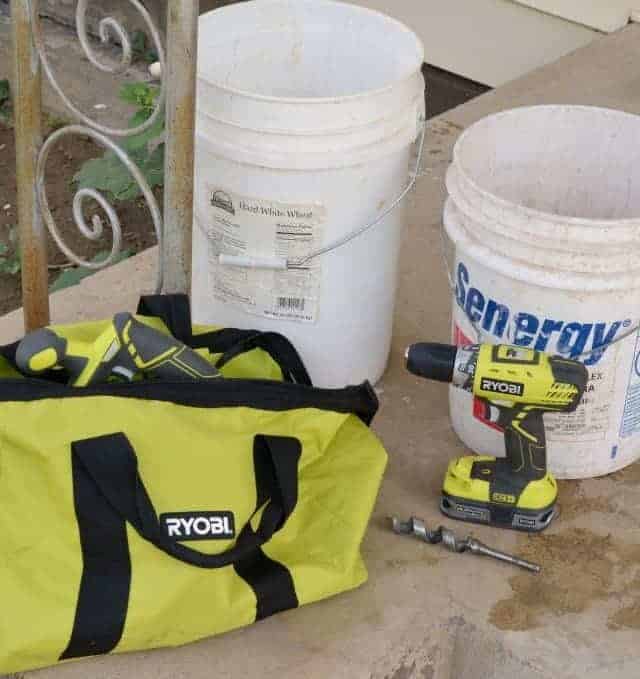
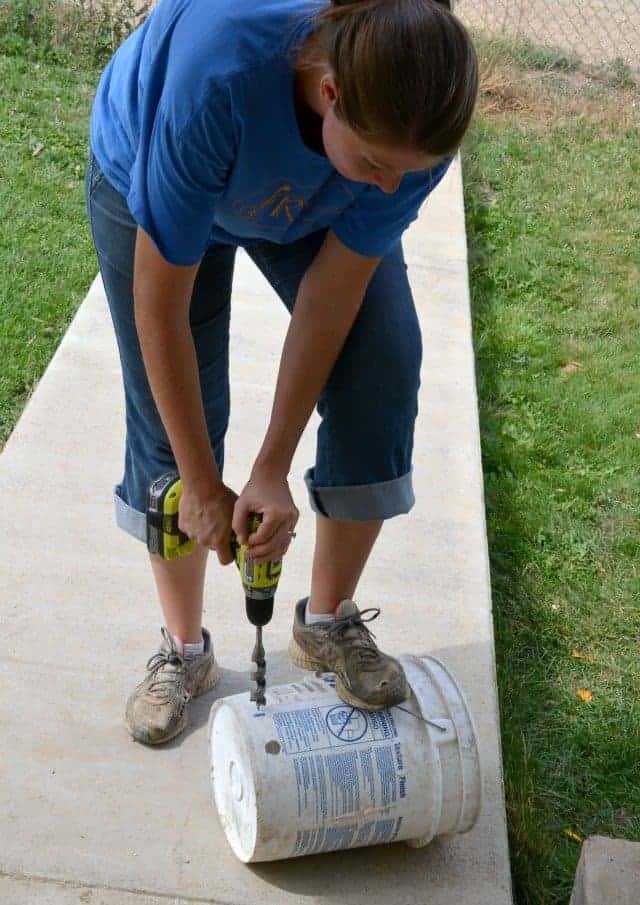
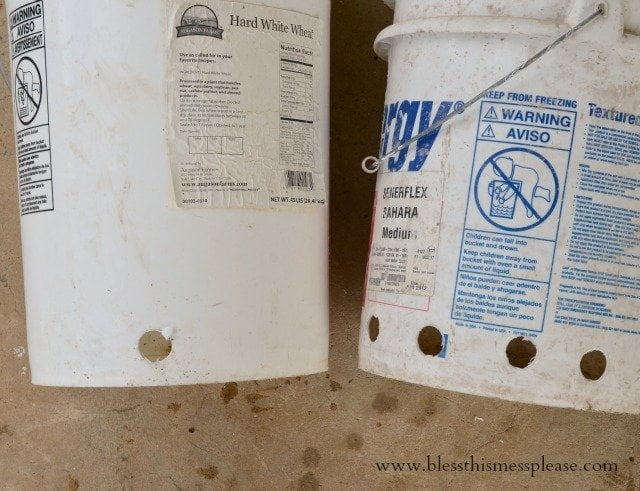

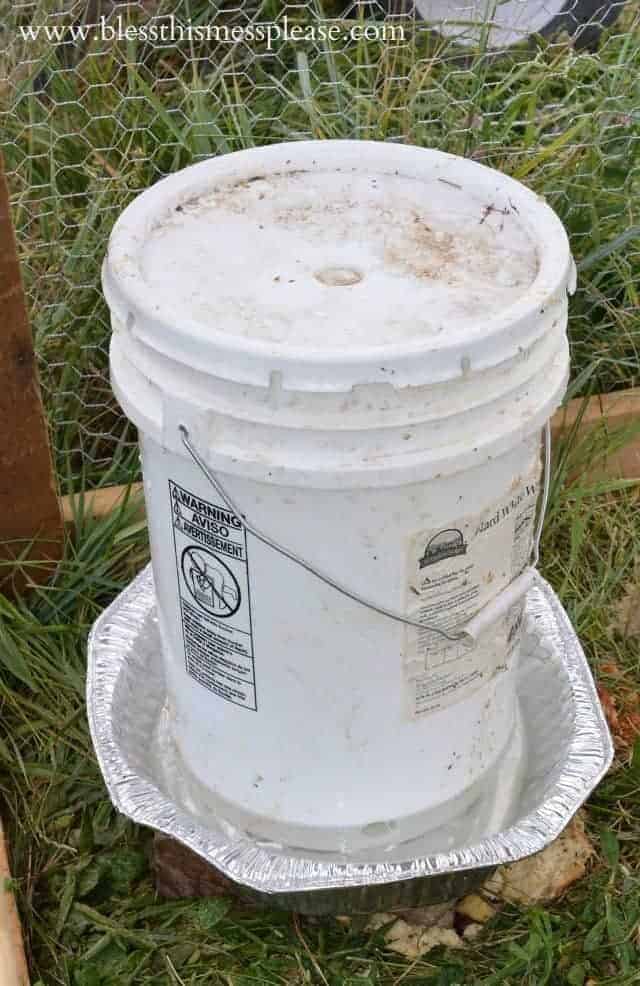
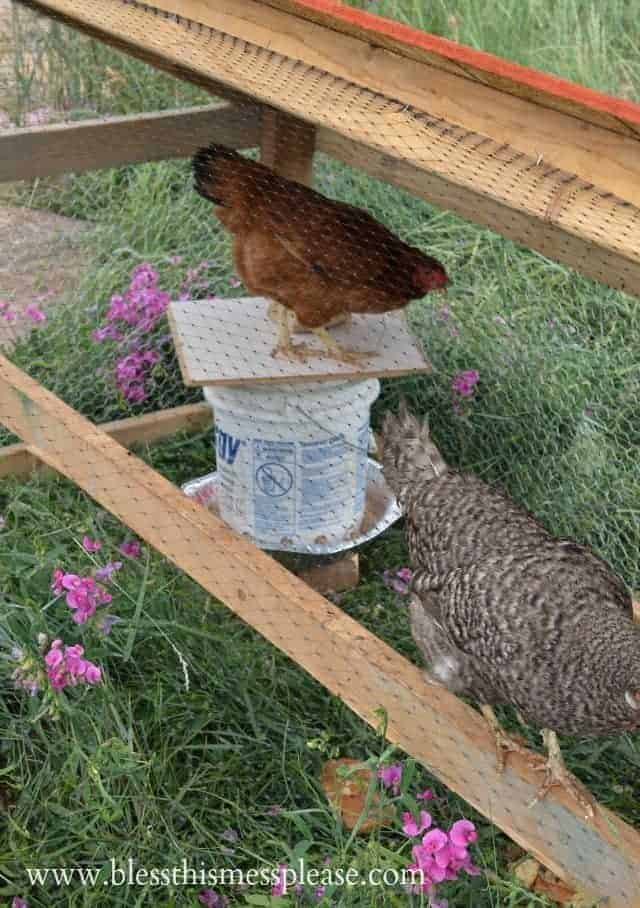
Sometimes life on the farm can be much simpler than we think, and this DIY chicken waterer and feeder from 5-gallon buckets is the perfect example. An easy and cheap way to provide an effective and reliable feed and watering system for your chickens.
If you’ve been bitten by the DIY spirit, you might try your hand at building a chicken coop for the little egg factory in your backyard. I believe happy chickens make more eggs!
Update: October 2017
I have been using these same buckets as a DIY chicken waterer and feeder for over 4 years, though I have upgraded from the foil turkey roaster pans. Those pans lasted about 6 weeks, but I was in it for the long haul.
I picked up some large (about 16 inches wide and 4 inches deep) round metal pans from our hardware store to replace the pans in these pictures. Similar pans are available on Amazon.
They cost me less than $10 each and have lasted 4 years. So for $20 total, instead of $2, I have a large feeder and waterer that I’ve used for years. They work great and I still highly recommend making these.
More Farm Fun!
Farm Animals
The Complete Guide to Building A Chicken Coop
Recipes by Cook Time
Easy Pumpkin Dog Treat Recipe
Did you try this project? Share it on Instagram, Facebook, and Pinterest!

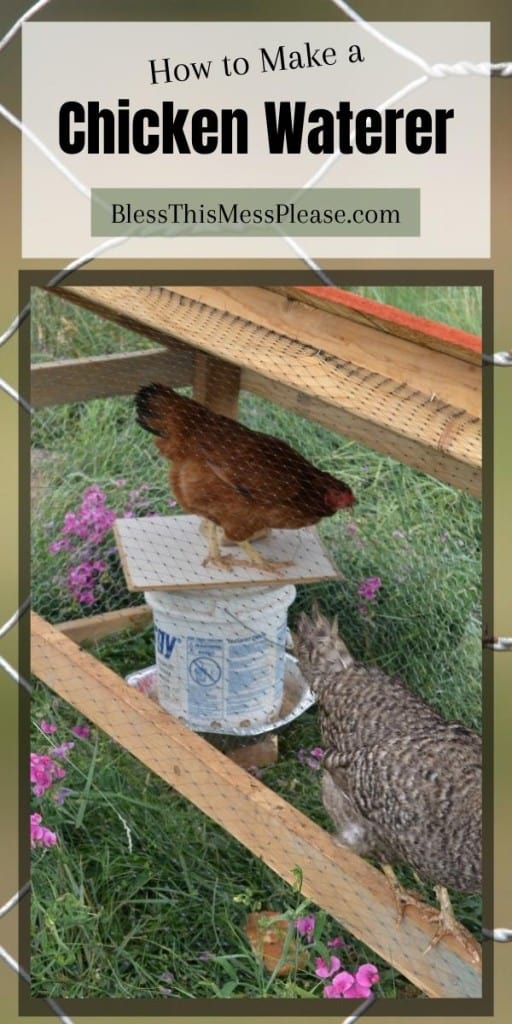
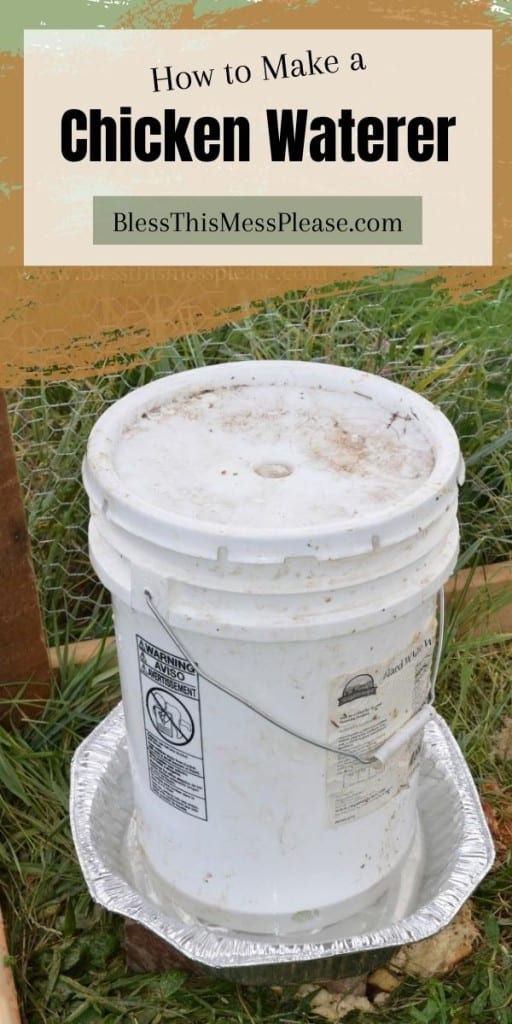
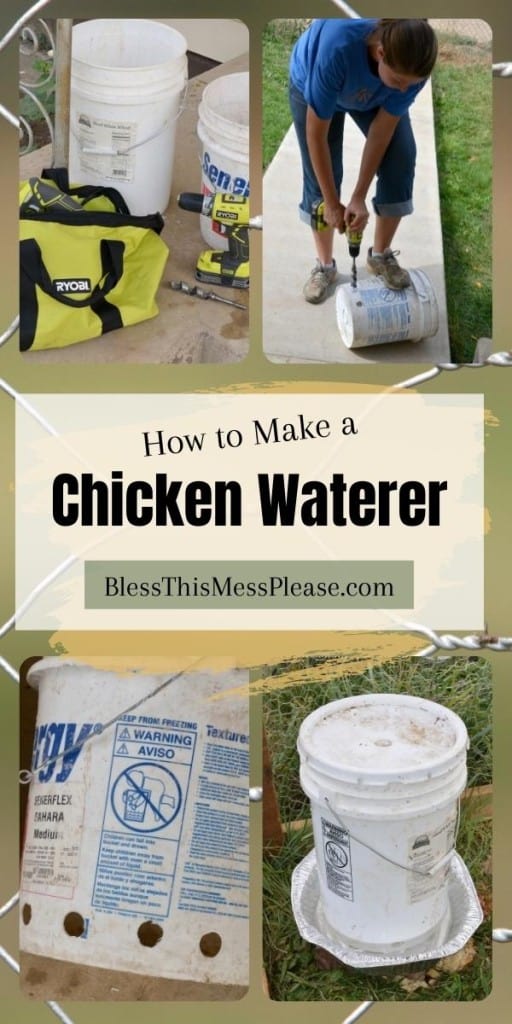
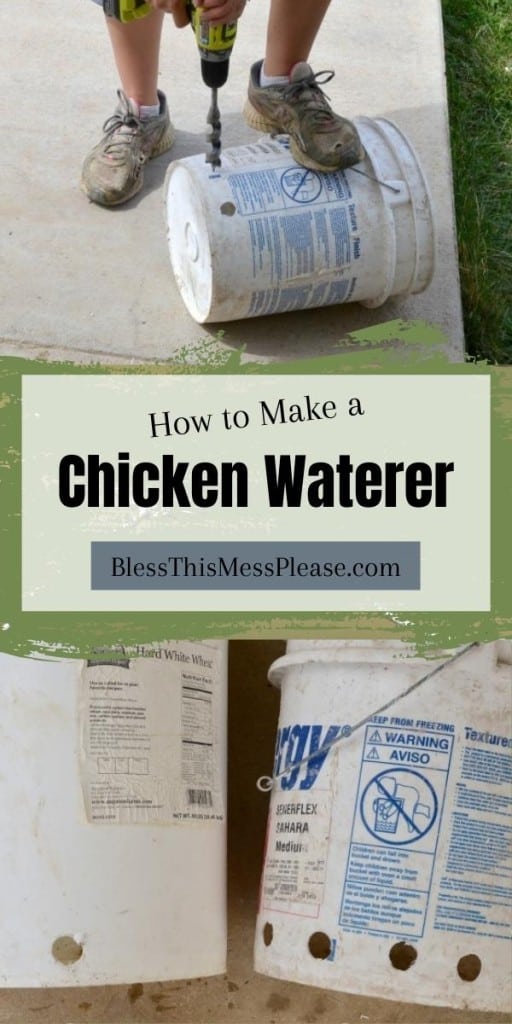
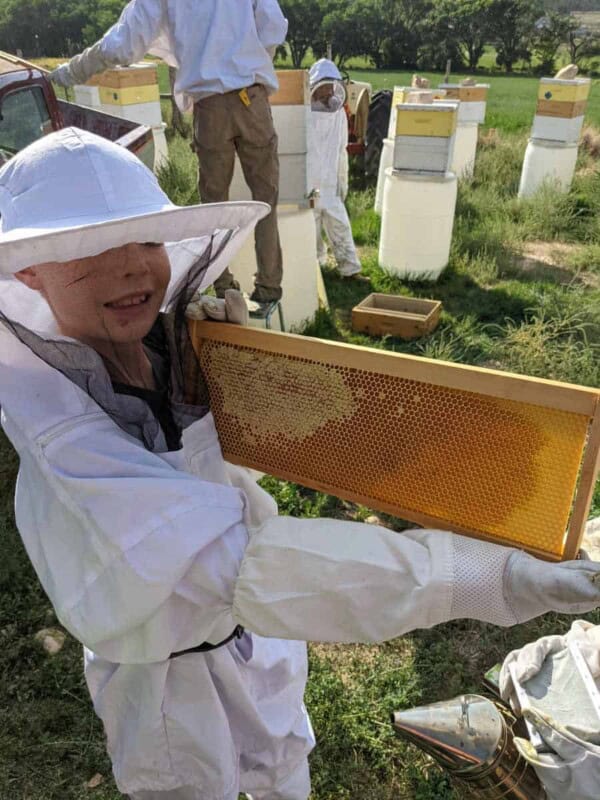
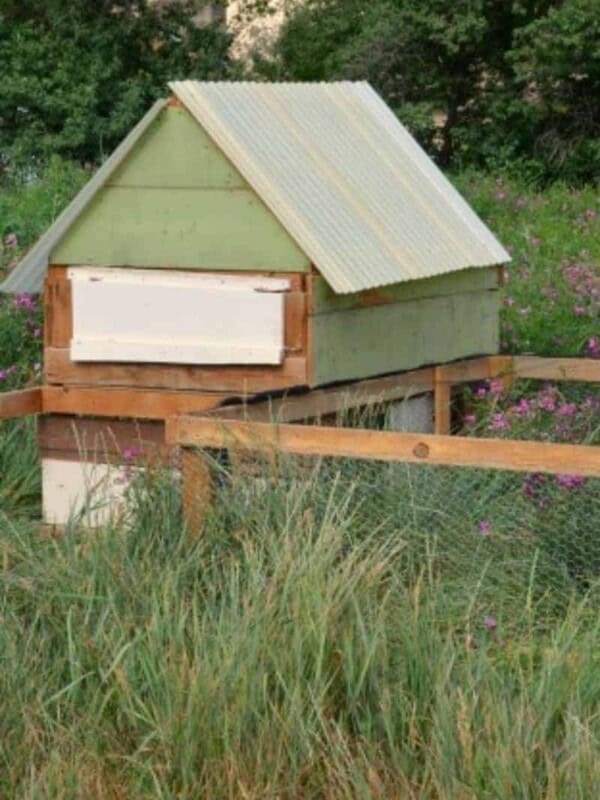
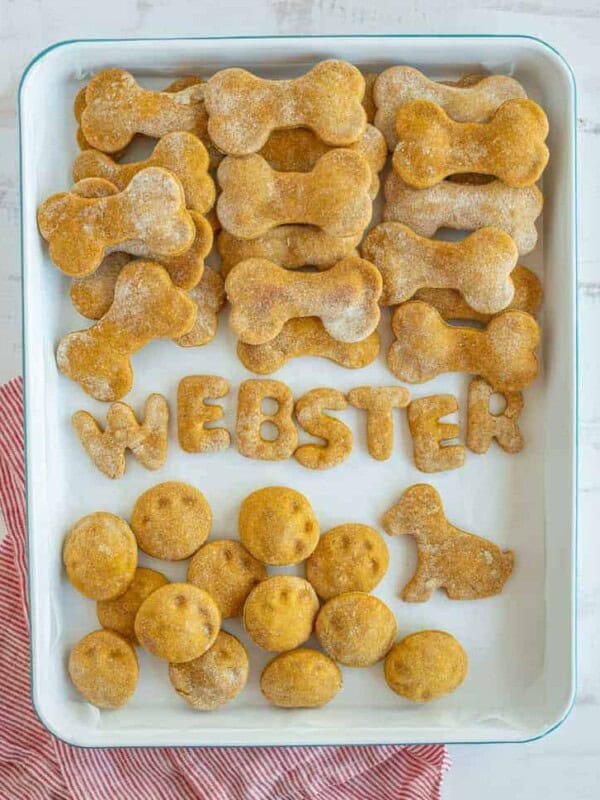
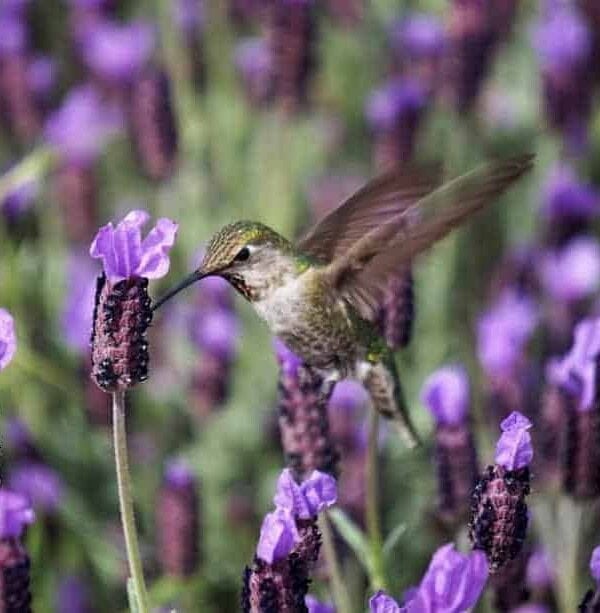






GREAT CREATIVE WORK, COULD NOT IMAGINE THE ”THROW-AWAY” COULD BE OF SUCH GREAT USE IN MY FARM.
It really is a big help on the farm. Running out of water is the worst, and not having to worry about it too much is the best!
Great info,I set mine on a cinder block so they don’t scratch bedding into it
I used your idea but modified it by replacing the foil pan with one of those plastic pans that go with planters. I bolted it with 3/8 bolt and washers (rubber) to prevent leaks and now the buckets hang with the base attached. No water has leaked yet. Fingers crossed.
how do you fill the homemade waterers? The commercial ones have a rubber stopper that prevents water from flowing out while you’re filling it, how does this one work best to fill?
Thanks!
I got ones from a restaurant that were for oil or pickles and they have a screw on and off spot on the lid. I have others that I just tip to fill and then tip back in to the pan, not the easiest but it works!
You could use a plug or tape and remove after your lid is placed..
Be sure to remove the wire handle on the bucket, chickens or other foul can get caught (legs,beaks,necks) and die. Otherwise this is a really great feeder.
Excellent idea…my chickens may need these at some point.
what about pellet feed and water holes seem too large maybe 1/4 inch holes
I got plastic drain pans from Dollar Tree for the bottoms of my feeder/waterer. They are just barely larger in diameter than the buckets. $1 each, sturdy and won’t corrode. They work great!
Great idea!
Like your idea.
hi! This is a great idea! my husband and I decided to make our own. However, we changed the design of the water bucket, instead of 2 drilled holes we decided to put a valve in that we can lock when we need to refill the water. It works great! Thanks again for sharing!
I would love to see this in pictures. Curious if the chicken nipples would work with this and then it could hang instead of taking up space on the floor???
Thanks for the tips!